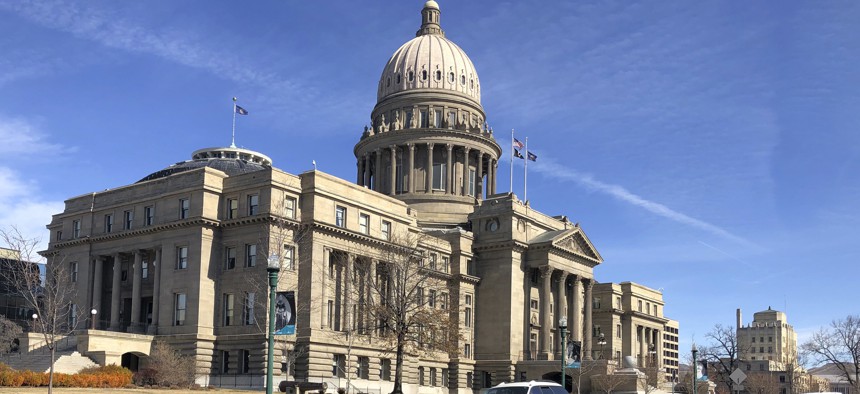Pandemic Growth Led This State to Slash Taxes, Issue Rebates

In this March 4, 2020, file photo, is the Idaho Statehouse in Boise, Idaho. AP Photo/Keith Ridler
Tax policy experts and state officials believe Idaho’s rapid economic growth will offset the tax cuts, making them feasible under federal funding rules.
Some states are concerned they could lose out on federal covid relief funding if they cut taxes. But not Idaho.
State lawmakers approved legislation that will send $220 million in tax rebates back to residents and lower taxes across all income brackets.
Both tax policy experts and state officials believe Idaho’s rapid economic growth will offset the tax cuts, making them feasible under federal funding rules.
The American Rescue Plan Act appropriates $195 billion in direct aid for state governments, but restricts states from using the money “to either directly or indirectly offset a reduction in the net tax revenue.”
Idaho’s tax relief law, which took effect July 1, will provide rebates of either $50 per taxpayer and dependent or 9% of income tax the person paid in 2019, whichever is greater. The law also consolidates seven income tax brackets into five, lowering the rate paid across every bracket and cutting personal and corporate taxes by $163 million a year.
Idaho led the country with 11% growth in tax collections during the pandemic, and the state is forecasting an $800 million budget surplus this fiscal year. That strong economic growth, in part due to a surge in population, will enable the state to offset the tax cuts and make rebates possible, said a spokeswoman for Gov. Brad Little.
“The organic revenue growth will more than offset Idaho’s historic tax cut and record investments in transportation infrastructure,” said spokeswoman Emily Callihan.
The governor plans to invest ARPA funds in long-range projects including broadband and water infrastructure, she said.
Under ARPA, “states can provide tax relief out of their own tax growth,” said Jared Walczak, the vice president of state projects at the Tax Foundation.
Several states have challenged the tax mandate included in ARPA, including Ohio, which scored a legal victory last week when a federal judge ruled that the Treasury Department could not enforce a provision in the law that bans the state from using the federal aid to offset tax cuts.
The Treasury Department has issued guidance on the state and local aid, indicating that if a net tax reduction is less than a state’s growth in tax revenue, it will not be considered a violation of the offset provision.
“Idaho is in a very strong place here because it is using state revenue growth to pay for this relief,” Walczak said.
At least 10 states have cut individual or corporate tax rates this year, Walczak said, with Idaho’s cuts ranking among the largest.
The Idaho Tax Commission is still working out the details of how the rebates will be issued, said commission spokeswoman Renee Eymann. But the payments, whether made in the form of check or direct deposit, will start to go out next month, she said.
The Idaho Center for Fiscal Policy was critical of the proposal, noting it would shift the tax load “more heavily onto the shoulders of more modest income Idahoans while more affluent Idahoans would owe less as a percentage of their incomes.” Under the law, the top income and corporate tax rates were reduced from 6.9% to 6.5%.
Policy experts said the tax cuts will serve to reinforce the state’s recent growth surge. By lowering both income and corporate tax rates, the state is signaling to both remote workers and companies that embrace flexible working arrangements that Idaho could be a good hub, Walczak said.
“This tax relief is one way to send the message that Idaho is committed to being a lower tax state,” he said.
Andrea Noble is a staff correspondent with Route Fifty.
NEXT STORY: Only 2 of Top 25 Hotel Markets Have Recovered From Pandemic Revenue Crash





